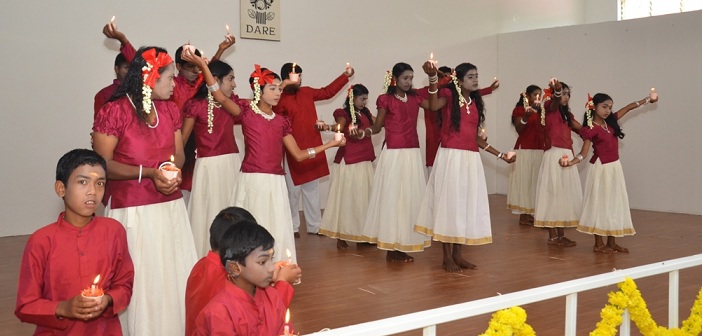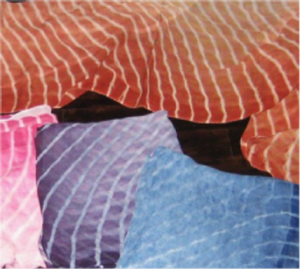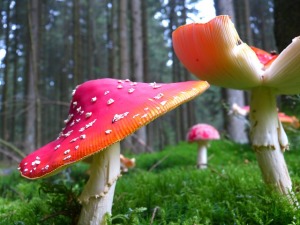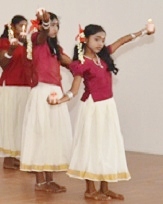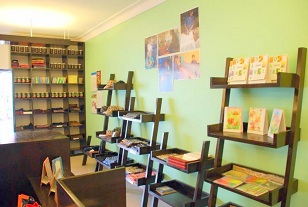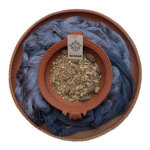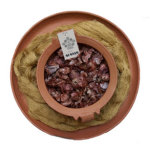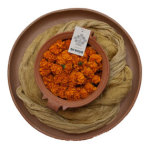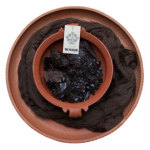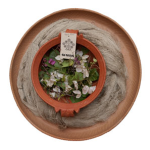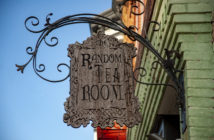In the nineteen eighties, India’s Kamaladevi Chattopadhyay led a search for 30 colorfast natural dyes that were eco-friendly, azo-free and non-polluting.
Inspired by the establishment of Fair Trade certified workplaces in Bangladesh, the colorful designs eventually attracted the attention of designers like Nicole Farhi, Giorgio Armani, Jurgen Lehl and retailers that include: Selfridges, Liberty, the Conran Shop, Chandni Chowk, and Habitat Clothes.
This revival of natural dyed fabric followed a century of industrialization that nearly extinguished this traditional heritage craft.
Working with natural dyes requires extraordinary skills beginning in the fields and forests. The task of cultivating or wild-harvesting and then drying and processing a broad swath of seeds, flower petals, leaves, and stems is followed by blending and boiling dyes.
The final step is hand dipping natural fabric after knotting, creating patterns in wax or wood cut printing that demands remarkable concentration, consistency and precision in repetition.
That is why the founders of Aranya Naturals turned to the differently-abled sons and daughters of Kanan Devan Hills Plantation workers.
Care without Welfare
The welfare safety net is porous in a land of 1.2 billion people where household earnings average $1,235 a year. Tea workers at KDHP are some of the highest paid in South India – but none could afford the cost of special education for children born with physical and mental limitations.
“We exist for a higher purpose that goes beyond producing goods for sale—that of ensuring sustainable livelihoods for differently-abled workers,” explains Ratna Krishnakumar, the managing trustee of the Srishti Trust at the Srishti Welfare Center. “It is an enriching experience working with the selfless and committed volunteers lead by Victoria Vijayakumar who has held the reins of Aranya since its humble beginnings,” she said.
Srishti began with a school in 1991 that has since expanded to five classrooms with an accompanying kitchen and dining area. There are currently 57 students from 4 to 18 years of age. The DARE (Development Activities in Rehabilitative Education) program offers individualized instruction for young children with a range of disabilities. A crèche was later established to care for infants. Upon graduation the most capable young adults attend vocational programs at the Srishti center but very few will go on to operate heavy machinery or process tea in any of the plantation’s 17 factories.
The center was established by Tata Global Beverages, Ltd. to give productive and meaningful work to these men and women. The center’s goal is to be self-sustaining.
Srishti is a complex that has evolved over time to include a strawberry preserve unit where workers paused from cleaning strawberries to show this reporter how they boil and sweeten the fruit and sterilize jars of jam for sale in local markets. Participants tended strawberry gardens where they learned the basics of horticulture. The organization also purchases large quantities of berries from workers who grow them in their kitchen gardens.
In 1997 the vocational education program was expanded to include production of stationery and paper made from recycled waste. A greeting card and paper-products line was later introduced with artwork and hand-applied text. A bakery and confectionery is managed and run by people with speech impairments and those with hearing loss.
Natural Fabric Dyeing
The showcase craft at Srishti is fabric dyeing. Aranya Naturals was founded in 1994. On a visit there, workers proudly raised their multi-colored hands in greeting, a mark of distinction among those at the center. They were excited to show visitors their skills at batik, mordant printing and hand-carved woodcut prints.
Dyeing is exacting and difficult work. The workers dye cotton, silk, jute, hemp, bamboo and pashmina cloth using mordant to preserve the natural color of the fabric and screen printing applied to bolts of cloth. Techniques include Shibori, a Japanese technique that produces exquisite, translucent colors.
The vivid colors and unique designs have netted Aranya many awards including the 20,000 rupee prize from Maiwa Handprints Ltd., in Vancouver, Canada.
“Our vision is to be a model institution—a model for processes, for making quality natural dyed fabric, and for rehabilitation of disabled youngsters,” said Mrs. Krishnakumar.
Colors of the Natural Rainbow
Catechu – Brown
Lac – Red
Manjista – Red
Indigo – Blue
Turmeric – Yellow
Pomegranate – Yellow & Green
Myrobalan – Pale Yellow
Tea – Beige & Gray
Eucalyptus – Gray
Eupatorium (kozha) – Green & YellowSource: Tata Global Beverages’ Srishti Welfare Initiative Inaugurates New Premises for DARE School in Munnar

